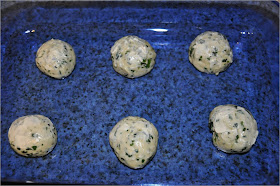Hello Friends,
As promised, here is some more info on Rajasthan, hope you will like it.
Many of you might have heard of the name called "Mount Abu" a famous tourism location, a hill station.
Mount Abu is the highest peak in the Aravalli Range of Rajasthan state in western India. It is located in Sirohi district. Mount Abu is 58 km from Palanpur (Gujarat). The mountain forms a distinct rocky plateau 22 km long by 9 km wide. The highest peak on the mountain is Guru Shikhar, at 1722 meters above sea level. It is referred to as 'an oasis in the desert', as its heights are home to rivers, lakes, waterfalls and evergreen forests. Ancient Name of Mount Abu is "Arbudaanchal".
The town of Mount Abu, the only hill station in Rajasthan, is located at an elevation of 1220 meters. It has been a popular retreat from the heat of Rajasthan and neighbouring Gujarat for centuries. The Mount Abu Wildlife Sanctuary was established in 1960 and covers 290 km² of the mountain.
Mount Abu is home to a number of Jain temples. The Dilwara Temples are a complex of temples, carved of white marble, that were built between the 11th and 13th centuries AD. The oldest of these is the Vimal Vasahi temple, built in 1031 AD by Vimal Shah and dedicated to the first of the Jain Tirthankaras. The Lun Vasahi Temple were built in 1231 AD by the brothers Vastupal and Tejpal, who belonged to the Porwal Jain community. They were ministers of Raja Vir Dhawal, a local ruler of Gujarat.
The Achalgarh fort, built in the 14th century by Rana Kumbha of Mewar, stands nearby. It encloses several beautiful Jain temples, including the Achaleswar Mahadev Temple (1412) and the Kantinath Temple (1513).
Nakki Lake is another popular visitor attraction of Mount Abu.There is the Toad Rock on a hill near the lake. Raghunath Temple and Maharaja Jaipur Palace are also on hills near Nakki Lake.
The mountain is also home to several Hindu temples, including the Adhar Devi Temple, carved out of solid rock; the Shri Raghunathji Temple; and a shrine and temple to Dattatreya built atop the Guru Shikhar peak. The world headquarters of the Brahma Kumari order of lady renunciates is also located here, as is the World Spiritual University of the same denomination. The Durga temple, Ambika Mata Temple lies in a cleft of rock in Jagat, just outside of Mount Abu.
Rajma Sabzi - राजमा सब्जी (Red Kidney Beans Curry)
Ingredients
Rajma (Red Kidney Beans) - 1 cup (washed and soaked overnight)
Onion - 1 cup (finely chopped)
Tomoato - 1 cup (finely chopped)
Ginger - 1 inch grated
Garlic - 3 cloves
Lal Mirch (Red Chilli) Powder - 1 tsp (You can use 2-3 green chillies instead of this dried form)
Haldi (Turmeric) Powder - 1 tsp
MDH Rajmah Masala - 2 tsp
Cumin (Jeera) Powder - 1 tsp
MDH Chat Masala - 1 tsp
Salt - as per taste
Oil - 1 tbsp
Cilantro - For Garnishing
Preparation
- Take a cooker and add oil to it
- Once oil is hot, add chopped onions, ginger, garlic and green chillies (if you are using green chillies instead of lal mirch). Fry for about 3 minutes
- Add tomatoes and all dry masalas and fry for another 2 minutes
- Add drained rajma, mix well, cook for 2 minutes
- Add enough water to cover rajma and cook for 15-20 minutes with cooker lid properly closed (You can increase or decrease the time depending on your cooker and also if you like your beans to be lightly mushy or bite feel)
- Open the lid of the cooker when it has released all its steam and garnish with cilantro.
Serving
This is well enjoyed with Rice and Roti/Paratha/Naan equally based on your liking. For example, I love it with warm rice whereas my husband and son enjoy with rotis.
Till next post, take care and have a wonderful day !!!
























